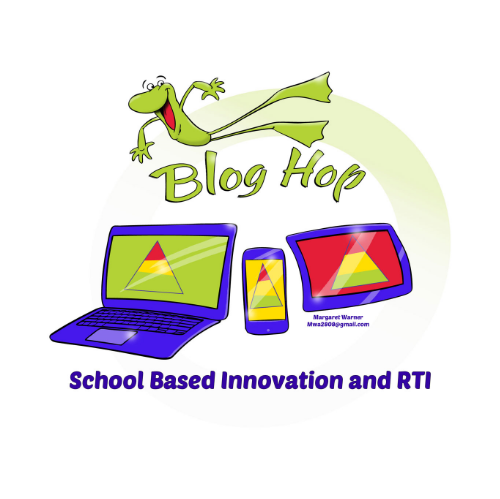 Last year an esteemed colleague, Dr. Roseberry-McKibbin posed this question in our Bilingual SLPs Facebook Group: “Is anyone working on morphological awareness in therapy with ELLs (English Language Learners) with language disorders?”
Last year an esteemed colleague, Dr. Roseberry-McKibbin posed this question in our Bilingual SLPs Facebook Group: “Is anyone working on morphological awareness in therapy with ELLs (English Language Learners) with language disorders?”
Her question got me thinking: “How much time do I spend on treating morphological awareness in therapy with monolingual and bilingual language disordered clients?” The answer did not make me happy!
So what is morphological awareness and why is it important to address when treating monolingual and bilingual language impaired students?
Morphemes are the smallest units of language that carry meaning. They can be free (stand alone words such as ‘fair’, ‘toy’, or ‘pretty’) or bound (containing prefixes and suffixes that change word meanings – ‘unfair’ or ‘prettier’).

Morphological awareness refers to a ‘‘conscious awareness of the morphemic structure of words and the ability to reflect on and manipulate that structure’’ (Carlisle, 1995, p. 194). Also referred to as “the study of word structure” (Carlisle, 2004), it is an ability to recognize, understand, and use affixes or word parts (prefixes, suffixes, etc) that “carry significance” when speaking as well as during reading tasks. It is a hugely important skill for building vocabulary, reading fluency and comprehension as well as spelling (Apel & Lawrence, 2011; Carlisle, 2000; Binder & Borecki, 2007; Green, 2009).
So why is teaching morphological awareness important? Let’s take a look at some research.
Goodwin and Ahn (2010) found morphological awareness instruction to be particularly effective for children with speech, language, and/or literacy deficits. After reviewing 22 studies Bowers et al. (2010) found the most lasting effect of morphological instruction was on readers in early elementary school who struggled with literacy.
Morphological awareness instruction mediates and facilitates vocabulary acquisition leading to improved reading comprehension abilities (Bowers & Kirby, 2010; Carlisle, 2003, 2010; Guo, Roehrig, & Williams, 2011; Tong, Deacon, Kirby, Cain, & Parilla, 2011).

Unfortunately as important morphological instruction is for vocabulary building, reading fluency, reading comprehension, and spelling, it is often overlooked during the school years until it’s way too late. For example, traditionally morphological instruction only beings in late middle school or high school but research actually found that in order to be effective one should actually begin teaching it as early as first grade (Apel & Lawrence, 2011).
So now that we know that we need to target morphological instruction very early in children with language deficits, let’s talk a little bit regarding how morphological awareness can be assessed in language impaired learners.
When it comes to standardized testing, both the Test of Language Development: Intermediate – Fourth Edition (TOLD-I:4) and the Test of Adolescent and Adult Language–Fourth Edition (TOAL-4) have subtests which assess morphology as well as word derivations. However if you do not own either of these tests you can easily create non-standardized tasks to assess morphological awareness.
Apel, Diehm, & Apel (2013) recommend multiple measures which include: phonological awareness tasks, word level reading tasks, as well as reading comprehension tasks.
Below are direct examples of tasks from their study:

One can test morphological awareness via production or decomposition tasks. In a production task a student is asked to supply a missing word, given the root morpheme (e.g., ‘‘Sing. He is a great _____.’’ Correct response: singer). A decomposition task asks the student to identify the correct root of a given derivation or inflection. (e.g., ‘‘Walker. How slow can she _____?’’ Correct response: walk).
Another way to test morphological awareness is through completing analogy tasks since it involves both decomposition and production components (provide a missing word based on the presented pattern—crawl: crawled:: fly: ______ (flew).
Still another way to test morphological awareness with older students is through deconstruction tasks: Tell me what ____ word means? How do you know? (The student must explain the meaning of individual morphemes).
Finding the affix: Does the word ______ have smaller parts?
So what are the components of effective morphological instruction you might ask?

Below is an example of a ‘Morphological Awareness Intervention With Kindergarteners and First and Second Grade Students From Low SES Homes’ performed by Apel & Diehm, 2013:

Here are more ways in which this can be accomplished with older children:
- Find the root word in a longer word
- Fix the affix (an additional element placed at the beginning or end of a root, stem, or word, or in the body of a word, to modify its meaning)
- Affixes at the beginning of words are called “prefixes”
- Affixes at the end of words are called “suffixes
- Word sorts to recognize word families based on morphology or orthography
- Explicit instruction of syllable types to recognize orthographical patterns
- Word manipulation through blending and segmenting morphemes to further solidify patterns
Now that you know about the importance of morphological awareness, will you be incorporating it into your speech language sessions? I’d love to know!
Until then, Happy Speeching!

References:
- Apel, K., & Diehm, E. (2013). Morphological awareness intervention with kindergarteners and first and second grade students from low SES homes: A small efficacy study. Journal of Learning Disabilities.
- Apel, K., & Lawrence, J. (2011). Contributions of morphological awareness skills to word-level reading and spelling in first-grade children with and without speech sound disorder. Journal of Speech, Language & Hearing Research, 54, 1312–1327.
- Apel, K., Brimo, D., Diehm, E., & Apel, L. (2013). Morphological awareness intervention with kindergarteners and first and second grade students from low SES homes: A feasibility study. Language, Speech, and Hearing Services in Schools, 44, 161-173.
- Binder, K. & Borecki, C. (2007). The use of phonological, orthographic, and contextualinformation during reading: a comparison of adults who are learning to read and skilled adult readers. Reading and Writing, 21, 843-858.
- Bowers, P.N., Kirby, J.R., Deacon, H.S. (2010). The effects of morphological instruction on literacy skills: A systematic review of the literature. Review of Educational Research, 80, 144-179.
- Carlisle, J. F. (1995). Morphological awareness and early reading achievement. In L. B. Feldman (Ed.), Morphological aspects of language processing (pp. 189–209). Hillsdale, NJ: Erlbaum.
- Carlisle, J. F. (2000). Awareness of the structure and meaning of morphologically complex words: Impact on reading. Reading and Writing: An Interdisciplinary Journal,12,169-190.
- Carlisle, J. F. (2004). Morphological processes that influence learning to read. In C. A. Stone, E. R. Silliman, B. J. Ehren, & K. Apel (Eds.), Handbook of language and literacy. NY: Guilford Press.
- Carlisle, J. F. (2010). An integrative review of the effects of instruction in morphological awareness on literacy achievement. Reading Research Quarterly, 45(4), 464-487.
- Goodwin, A.P. & Ahn, S. (2010). Annals of Dyslexia, 60, 183-208.
- Green, L. (2009). Morphology and literacy: Getting our heads in the game. Language, Speech, and Hearing Services in the schools, 40, 283-285.
- Green, L., & Wolter, J.A. (2011, November). Morphological Awareness Intervention: Techniques for Promoting Language and Literacy Success. A symposium presentation at the annual American Speech Language Hearing Association, San Diego, CA.
- Guo, Y., Roehrig, A. D., & Williams, R. S. (2011). The relation of morphological awareness and syntactic awareness to adults’ reading comprehension: Is vocabulary knowledge a mediating variable? Journal of Literacy Research, 43, 159-183.
- Tong, X., Deacon, S. H., Kirby, J. R., Cain, K., & Parrila, R. (2011). Morphological awareness: A key to understanding poor reading comprehension in English. Journal of Educational Psychology, 103 (3), 523-534.



 High comorbidity between language and psychiatric disorders has been well documented (Beitchman, Cohen, Konstantaras, & Tannock, 1996; Cohen, Barwick, Horodezky, Vallence, & Im, 1998; Toppelberg & Shapiro, 2000). However, a lesser known fact is that there’s also a significant under-diagnosis of language impairments in children with psychiatric disorders.
High comorbidity between language and psychiatric disorders has been well documented (Beitchman, Cohen, Konstantaras, & Tannock, 1996; Cohen, Barwick, Horodezky, Vallence, & Im, 1998; Toppelberg & Shapiro, 2000). However, a lesser known fact is that there’s also a significant under-diagnosis of language impairments in children with psychiatric disorders.  Last year an esteemed colleague, Dr. Roseberry-McKibbin posed this question in our
Last year an esteemed colleague, Dr. Roseberry-McKibbin posed this question in our 







